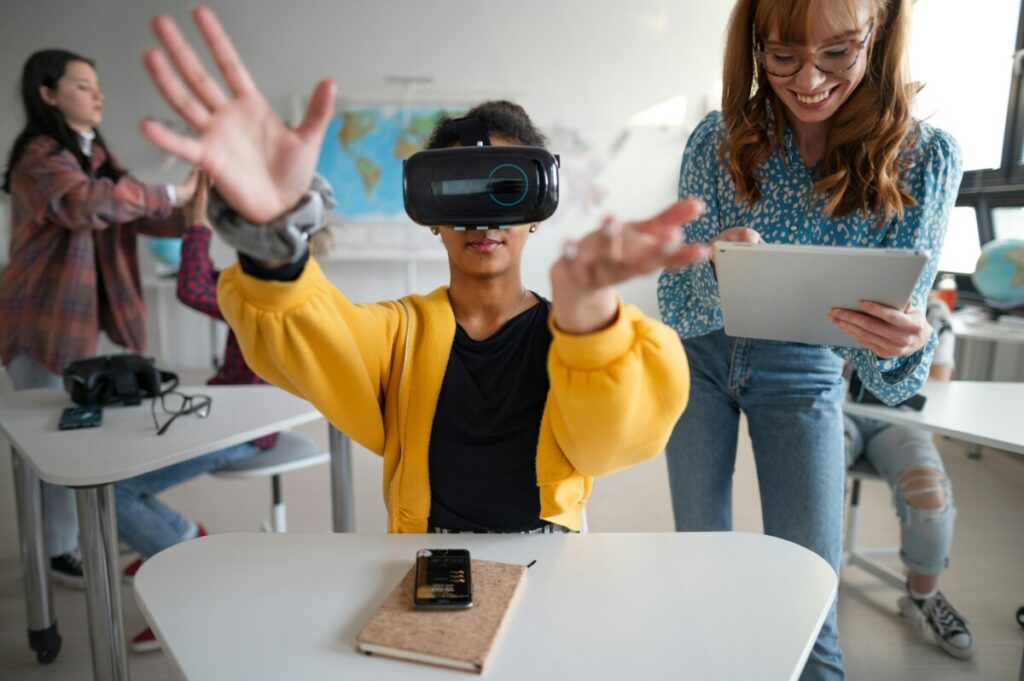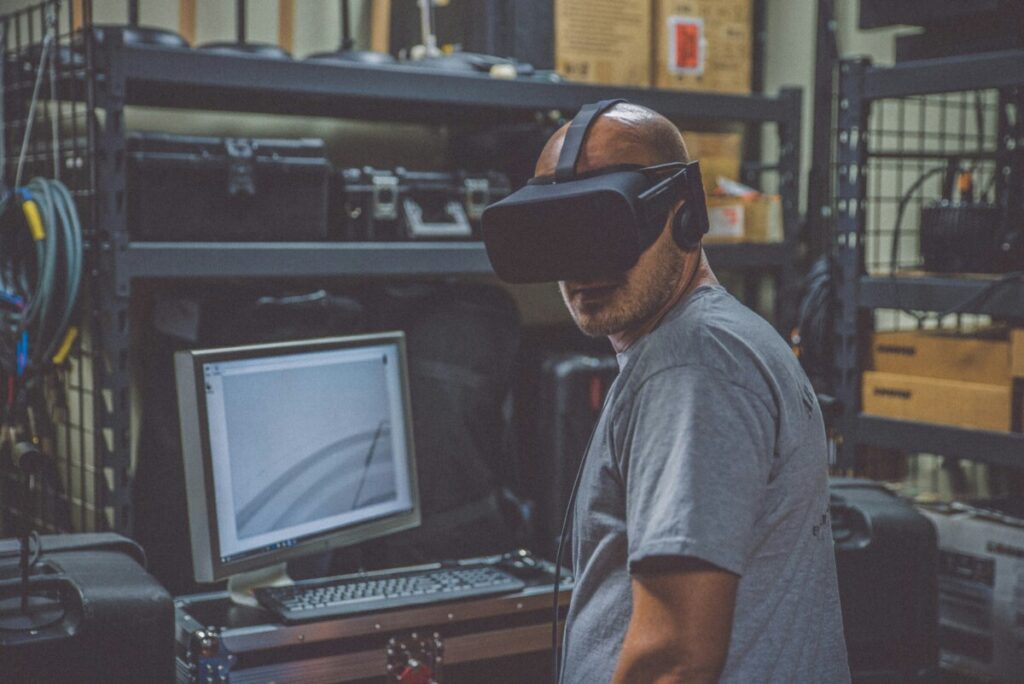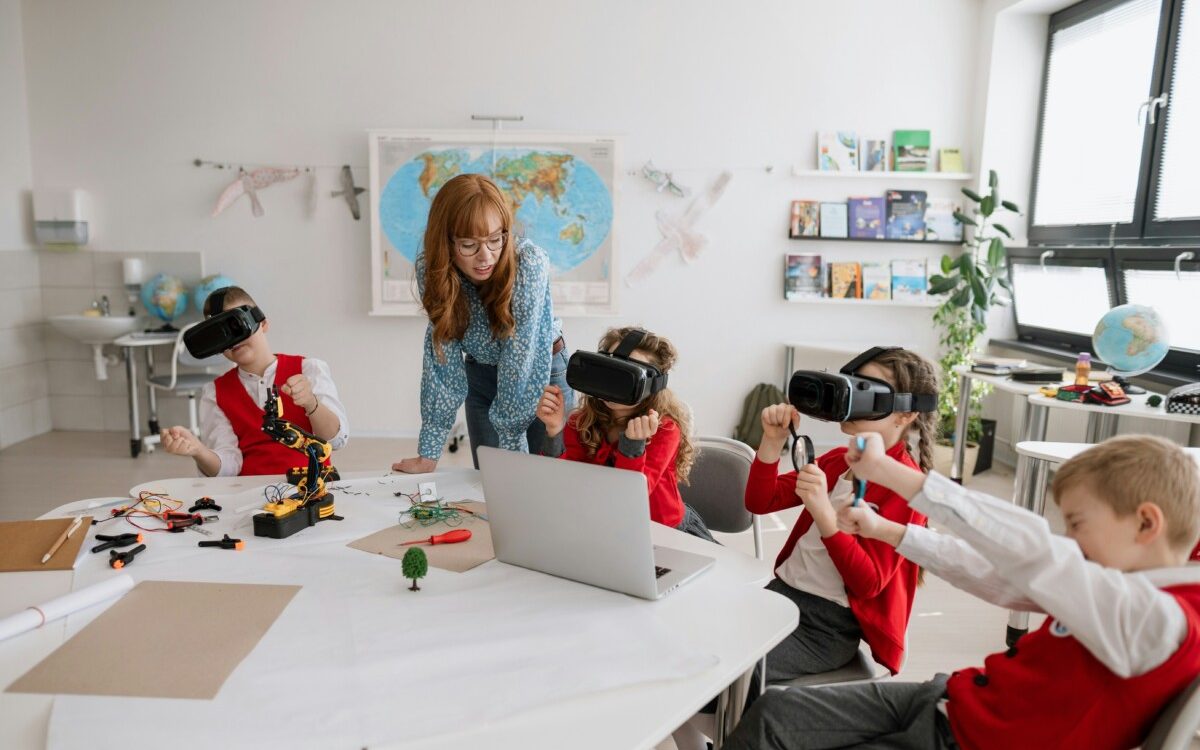Augmented Reality in Education: A New Era of Learning
Introduction to Augmented Reality in Education
Imagine a classroom where magic happens—where lessons burst into life with bright images and fun animations. In this space, augmented reality in education transforms ordinary classes into extraordinary adventures. Today, teachers use AR to turn plain subjects into vibrant experiences. For example, science lessons can reveal the hidden world of cells, while history classes let students step into ancient ruins. This technology is not a far-off dream. It is here now, and it is changing how we learn.
Every day, educators discover that AR makes tough topics easier to understand. Moreover, students can interact with 3D models, view dynamic infographics, and even manipulate virtual objects. So, learning is not only more fun but also more memorable. Additionally, AR helps break down complex ideas into simple, bite-sized parts that everyone can grasp. Teachers have reported that lessons become more engaging, and students show genuine excitement for their studies.
Furthermore, augmented reality in education offers benefits that extend far beyond the classroom. It personalizes the learning process. For instance, learners can explore subjects at their own pace while teachers guide them through interactive exercises. Also, this method supports various learning styles and makes abstract concepts concrete. As a result, both visual and kinesthetic learners thrive.
This new approach has a magnetic pull. It hooks you with its promise of innovation and interactive fun. In short, AR is not just a tool; it is a catalyst for a complete educational revolution. Learn more about AR in education
Benefits and Uses of Augmented Reality in Education in Action
Augmented reality in education brings many advantages to modern classrooms. First, it enhances understanding by turning static images into interactive lessons. Teachers now use AR to show the benefits of augmented reality in education—such as clearer visual explanations and higher student engagement. Additionally, simple AR apps let learners observe detailed scientific processes and historical events right before their eyes.
Moreover, AR is practical. Many educators report that uses of augmented reality in classrooms help reduce the gap between theory and practice. For instance, a lesson on the solar system becomes an immersive journey where planets orbit in a student’s own room. Transitioning from theory to practice is now easier and more enjoyable.
Real Classroom Success Stories
In one school, a teacher used AR to explain the water cycle. Students watched animated droplets travel through clouds and streams. This simple demonstration sparked lively discussion and deepened understanding. Their excitement was clear evidence of AR’s power to transform learning.

Essential Augmented Reality Tools for Teachers
Teachers now have many smart tools to integrate AR into their lessons. These augmented reality tools for teachers are designed to be simple and engaging. For example, some apps allow teachers to project 3D models onto whiteboards or tablets. This helps explain difficult subjects like anatomy or physics in a way that is easy to see and understand.
Furthermore, many of these tools are free or low-cost, which makes them accessible even for schools with limited budgets. Also, developers are continuously improving these platforms to ensure they are user-friendly and effective. With these tools, educators can create a more interactive classroom environment that sparks curiosity and supports various learning styles.
By adopting these tools, teachers also join a larger movement of EdTech innovations. Their classrooms become laboratories of exploration, where every lesson is a chance to experience interactive learning with augmented Moreover, they prepare students for a future where digital skills are key.
The Future of Augmented Reality in Education
Looking ahead, the future of augmented reality in education appears bright and full of promise. AR applications in education are set to revolutionize how information is shared and absorbed. Technology continues to evolve, and soon every classroom may be equipped with smart devices that bring learning to life.
Educators and innovators are working hand in hand to create better AR experiences. As a result, students will soon enjoy more personalized lessons. Moreover, the rapid pace of innovation ensures that AR will become even more interactive and intuitive. For instance, upcoming AR apps promise to integrate real-time feedback and adaptive learning paths that respond to each student’s pace.
Furthermore, experts say that AR will help close the achievement gap. It makes learning accessible to all, regardless of background or ability. With these advances, AR is set to become a core part of every modern curriculum. So, educators, policymakers, and EdTech developers are excited to invest in this future.
Interactive Learning with Augmented Reality Experiences
Interactive learning with augmented opens new doors to creativity. In today’s classes, students are not passive recipients; they are active explorers. AR makes lessons feel like a game where each click or swipe uncovers new information.
In many schools, AR has turned dull lectures into lively sessions. Teachers encourage students to interact with digital overlays that explain challenging concepts. Additionally, learners now ask questions and experiment with virtual simulations. This change leads to improved understanding and retention of material.
Furthermore, the interactivity of AR helps students build critical thinking and problem-solving skills. As they engage with the material, they learn by doing. This hands-on approach makes every lesson memorable. In short, AR paves the way for a new style of learning that is fun, engaging, and effective.

Immersive Learning and EdTech Innovations
Immersive learning experiences are changing the face of modern education. Through augmented reality in education, classrooms are becoming hubs of immersive learning experiences that captivate young minds. Teachers now use AR to create environments where students can see, touch, and feel what they learn.
Additionally, AR is at the heart of many EdTech innovations in education. For example, AR in virtual learning environments allows students to visit museums or historical sites without leaving school. This technology not only enriches learning but also makes it possible for every student to explore the world safely.
Moreover, AR supports technology for personalized education. It adapts to each student’s learning style and pace. These innovations have opened up new opportunities for educators and learners alike.
The transformation is evident. Schools are now integrating AR into their standard curriculum. As a result, every lesson becomes an adventure. Transitioning from traditional methods to these interactive techniques is not only exciting but also effective.
Conclusion and Next Steps
In conclusion, augmented reality in education stands as a true game changer. This technology makes learning fun, simple, and interactive. Teachers can now use AR to transform lessons into engaging stories. That captivates their students’ imaginations. Moreover, the benefits of augmented reality in education are clear. Students understand complex ideas more quickly, and lessons become truly memorable.
As schools adopt AR tools, they also join a community of educators who are leading the way in digital innovation. The journey does not stop here. In the coming years, the future of augmented reality in education will see even more advanced applications. With continuous improvements in AR applications in education. Every student can experience interactive lessons that are tailored to their needs.
Furthermore, the role of AR in classrooms will expand. Soon, more educators will adopt augmented reality tools for teachers. To create dynamic and personalized learning experiences. As a result, every classroom will become a space of exploration and discovery. Teachers and policymakers should seize this opportunity to modernize education.
For those looking to deepen their understanding of this innovative field. Visit our resources page for extra tips and insights. Likewise, external experts offer detailed analyses on emerging trends. You can learn more from trusted sources such as EdTech Trends.
Augmented reality in education is not just a fleeting trend. It is a powerful tool that reshapes how we learn and teach. With simple implementation and clear benefits, AR is set to leave a lasting mark on education. Embrace the future, and let AR guide your classroom into a new era of interactive, immersive learning.





